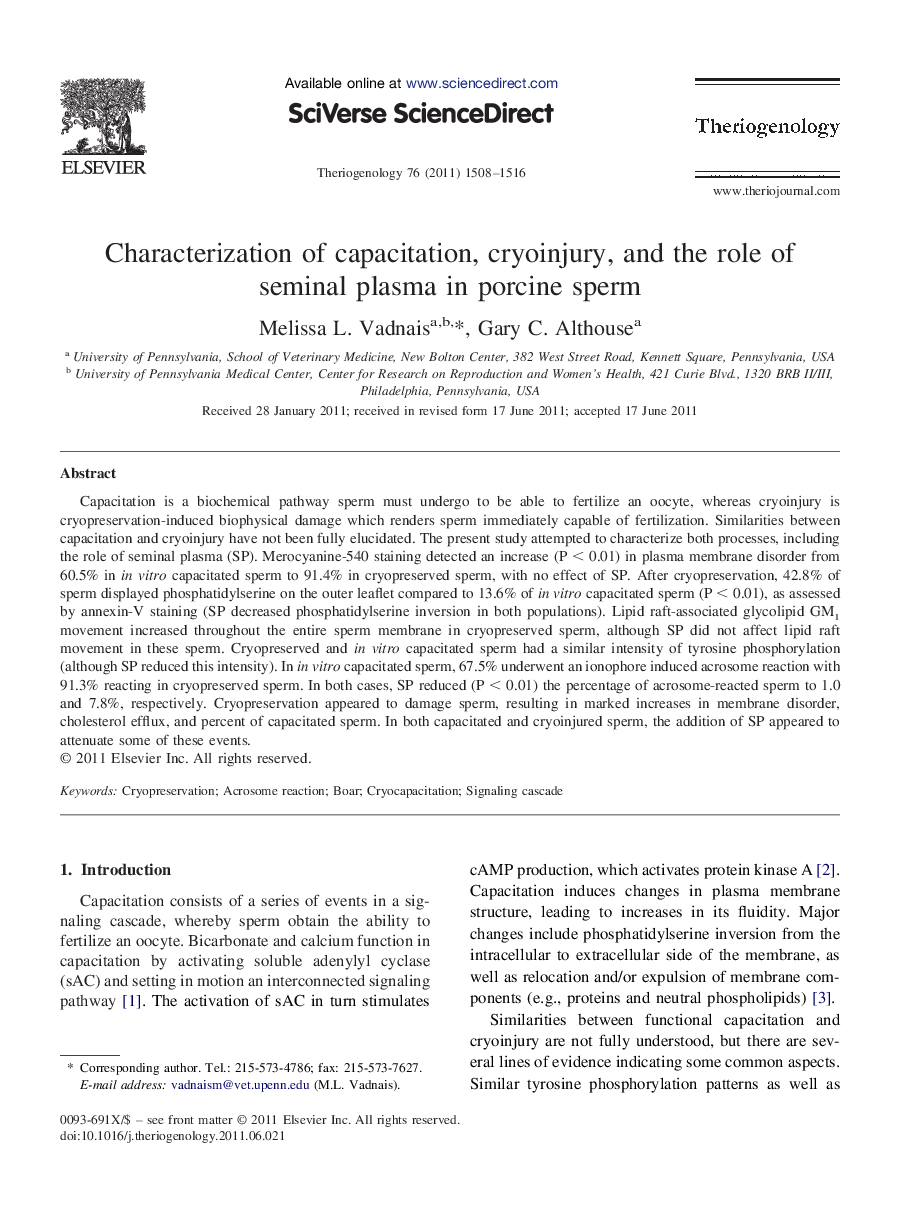| Article ID | Journal | Published Year | Pages | File Type |
|---|---|---|---|---|
| 2095396 | Theriogenology | 2011 | 9 Pages |
Capacitation is a biochemical pathway sperm must undergo to be able to fertilize an oocyte, whereas cryoinjury is cryopreservation-induced biophysical damage which renders sperm immediately capable of fertilization. Similarities between capacitation and cryoinjury have not been fully elucidated. The present study attempted to characterize both processes, including the role of seminal plasma (SP). Merocyanine-540 staining detected an increase (P < 0.01) in plasma membrane disorder from 60.5% in in vitro capacitated sperm to 91.4% in cryopreserved sperm, with no effect of SP. After cryopreservation, 42.8% of sperm displayed phosphatidylserine on the outer leaflet compared to 13.6% of in vitro capacitated sperm (P < 0.01), as assessed by annexin-V staining (SP decreased phosphatidylserine inversion in both populations). Lipid raft-associated glycolipid GM1 movement increased throughout the entire sperm membrane in cryopreserved sperm, although SP did not affect lipid raft movement in these sperm. Cryopreserved and in vitro capacitated sperm had a similar intensity of tyrosine phosphorylation (although SP reduced this intensity). In in vitro capacitated sperm, 67.5% underwent an ionophore induced acrosome reaction with 91.3% reacting in cryopreserved sperm. In both cases, SP reduced (P < 0.01) the percentage of acrosome-reacted sperm to 1.0 and 7.8%, respectively. Cryopreservation appeared to damage sperm, resulting in marked increases in membrane disorder, cholesterol efflux, and percent of capacitated sperm. In both capacitated and cryoinjured sperm, the addition of SP appeared to attenuate some of these events.
